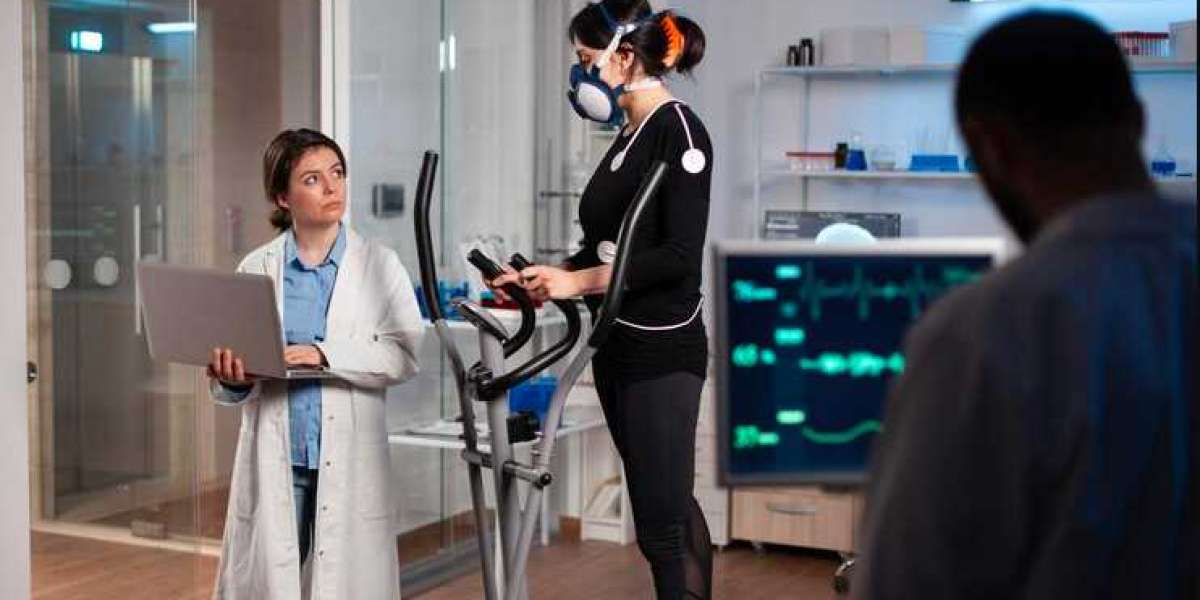The integration of exoskeleton technology into the field of medicine represents a transformative leap in patient care. Exoskeletons, once the realm of science fiction, are now a reality offering newfound hope to individuals facing mobility challenges.
This article delves into the intricate world of exoskeletons in medicine, exploring their evolution, applications, and the profound impact they have on the lives of those seeking enhanced mobility.
The Evolution of Exoskeletons
From Sci-Fi Dreams to Medical Reality
The concept of exoskeletons has long captured the imagination, with early depictions in science fiction literature and films. However, the transition from fantasy to reality began with the development of wearable robotic devices designed to augment human strength and endurance. This evolution laid the foundation for the application of exoskeletons in medical settings.
Applications of Exoskeletons in Medicine
Rehabilitation and Physical Therapy
The integration of exoskeletons into rehabilitation and physical therapy has been a game-changer. For individuals recovering from spinal cord injuries, strokes, or other debilitating conditions, exoskeletons offer a novel approach to regain mobility. The assistive technology provides targeted support, enabling patients to engage in gait training and other therapeutic exercises.
Mobility Solutions for Neurological Conditions
Exoskeletons have shown promise in addressing mobility challenges associated with neurological conditions such as Parkinson's disease and multiple sclerosis. By providing external support and assistance, these devices enhance the user's ability to walk and perform daily activities, significantly improving their overall quality of life.
Advancements in Pediatric Care
Children facing mobility impairments due to congenital disorders or injuries benefit from exoskeleton technology. Pediatric exoskeletons are designed to accommodate the unique needs of growing bodies, promoting early mobility and reducing the long-term impact of immobility on musculoskeletal development.
Enhanced Workplace Accessibility
Exoskeletons are not limited to clinical settings; they are making strides in enhancing workplace accessibility. In industries requiring repetitive tasks or heavy lifting, exoskeletons assist workers in reducing physical strain, preventing injuries, and ensuring a safer work environment.
Technological Innovations in Exoskeletons
Powered vs. Passive Exoskeletons
Powered Exoskeletons: Boosting Mobility Through Technology
Powered exoskeletons are equipped with motors and sensors that actively assist the user's movements. These devices offer a high degree of customization, allowing for tailored support based on the individual's specific needs. The incorporation of cutting-edge technology, such as artificial intelligence and machine learning, enhances the adaptability and responsiveness of powered exoskeletons.
Passive Exoskeletons: Amplifying Natural Movements
In contrast, passive exoskeletons operate without motorized assistance. Instead, they rely on mechanical structures and springs to provide support. While less complex than powered counterparts, passive exoskeletons are lauded for their simplicity, lightweight design, and cost-effectiveness, making them accessible to a broader range of users.
The Current Cost of Exoskeletons
Varied Pricing Across Models
The cost of exoskeletons can vary significantly depending on the model, features, and technological sophistication. As of now, exoskeleton prices generally range from tens of thousands to over a hundred thousand dollars. Factors influencing the cost include the type of exoskeleton (powered or passive), the extent of customization, and the specific functionalities designed to address various medical conditions.
Factors Contributing to Exoskeleton Costs
Technological Complexity
Powered exoskeletons, equipped with advanced technologies such as motors, sensors, and artificial intelligence, tend to be more expensive due to their technological complexity. These devices offer a higher level of customization and adaptability, contributing to their higher price range.
Research and Development Investments
The costs associated with researching, developing, and testing exoskeleton technologies contribute significantly to the overall price. As the field continues to advance, ongoing research and innovation are essential, influencing the pricing of newer and more advanced exoskeleton models.
Customization for Specific Conditions
Exoskeletons tailored to address specific neurological or musculoskeletal conditions may require more intricate designs and customization. This level of personalization adds to the overall cost, making these devices more expensive compared to more generalized models.
Affordability Solutions for Individuals with Mobility Challenges
Insurance Coverage and Reimbursement
Navigating Insurance Policies
One avenue for individuals to afford exoskeletons is through insurance coverage. Navigating insurance policies can be complex, and individuals may need assistance from healthcare providers and medical billing professionals. Understanding coverage options, including which types of exoskeletons are eligible for reimbursement, is crucial.
Reimbursement Processes
Medical billing services play a crucial role in facilitating the reimbursement process. By ensuring that healthcare providers submit accurate claims and documentation, individuals can increase the likelihood of receiving financial assistance for their exoskeletons. This includes working with insurance companies to maximize coverage and reduce out-of-pocket expenses.
Financial Assistance Programs and Grants
Exploring Financial Aid Options
Various financial assistance programs and grants exist to help individuals with mobility challenges afford exoskeletons. Nonprofit organizations, advocacy groups, and research institutions may offer funding opportunities or collaborate with individuals to secure resources for acquiring these advanced mobility solutions.
Collaborative Research Initiatives
Engaging in collaborative research initiatives can be another pathway to affordability. Some research projects or clinical trials offer access to exoskeletons at reduced costs or even free of charge for participants. Individuals can explore partnerships with local institutions or research centers to explore such opportunities.
Community Support and Fundraising
Building Community Networks
Building a network within the community can be a valuable resource for individuals seeking financial support. Local organizations, support groups, and community initiatives may offer assistance or guidance on fundraising efforts to help individuals acquire the necessary funds for exoskeletons.
Crowdfunding and Online Platforms
In the digital age, crowdfunding platforms provide individuals with an avenue to raise funds for medical needs, including exoskeletons. Creating online campaigns and sharing personal stories can garner support from friends, family, and even strangers who are willing to contribute to the cause.
Challenges and Future Directions
Overcoming Limitations
Addressing Affordability and Accessibility
While exoskeleton technology holds immense promise, challenges remain, particularly concerning affordability and accessibility. The cost of these devices can be prohibitive for many individuals, and navigating insurance coverage or finding financial assistance is often a hurdle. Bridging this gap is essential to ensure that exoskeletons are accessible to those who stand to benefit the most.
Fine-Tuning for Specific Conditions
Exoskeletons are currently tailored to address a range of conditions, but fine-tuning their capabilities for specific neurological or musculoskeletal conditions is an ongoing challenge. Collaborative efforts between engineers, healthcare professionals, and patients are crucial to refining exoskeleton designs to meet the diverse needs of the user population.
The Future Landscape
Integration with Neural Interfaces
The future of exoskeleton technology holds exciting possibilities with the integration of neural interfaces. Connecting exoskeletons directly to the user's nervous system could provide more seamless and intuitive control, opening avenues for greater mobility and independence.
Collaborative Research Initiatives
As the field continues to evolve, collaborative research initiatives between academia, healthcare institutions, and technology developers are pivotal. These partnerships can drive innovation, accelerate advancements, and ensure that exoskeleton technology becomes an integral part of mainstream medical practice.
Medical Billing Services in Dallas, Texas: Navigating Financial Landscapes
Integrating Exoskeleton Costs into Healthcare Finance
The Financial Landscape of Exoskeleton Adoption
The adoption of exoskeleton technology comes with financial considerations, and medical billing services in Dallas, Texas, play a crucial role in navigating these landscapes. Understanding the intricacies of insurance coverage, reimbursement processes, and financial assistance options is essential for both healthcare providers and patients seeking access to exoskeletons.
Insurance Coverage and Reimbursement
Navigating insurance coverage for exoskeletons requires a nuanced understanding of policies and guidelines. Medical billing services in Dallas specialize in facilitating the reimbursement process, ensuring that healthcare providers receive proper compensation for providing cutting-edge mobility solutions.
Patient Advocacy and Financial Assistance
Medical billing services also serve as advocates for patients, assisting them in navigating the financial aspects of exoskeleton adoption. This includes exploring financial assistance programs, negotiating with insurance providers, and facilitating partnerships with research institutions to make advanced treatments more accessible.
Conclusion: Paving the Way for Enhanced Mobility
In conclusion, the integration of exoskeletons into medicine marks a paradigm shift in how we approach mobility challenges. From rehabilitation to workplace accessibility, exoskeletons are empowering individuals to reclaim their independence. As technological innovations continue and financial landscapes evolve, the collaboration between medical professionals, engineers, and medical billing services in Dallas, Texas, is pivotal in ensuring that exoskeleton technology becomes a widely accessible and transformative solution for those in need.







